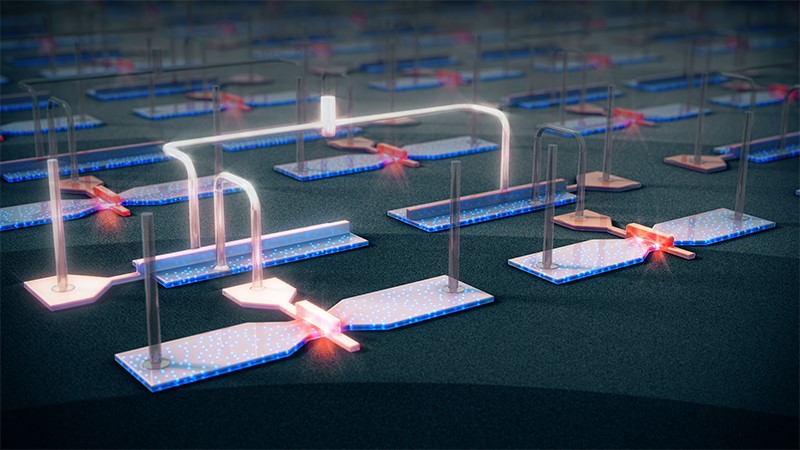Arguably, the defining technology of the last century has been the computer. Over the last few decades computers have been integrated in every single part of our lives. Whether it be calling your parents, shopping at the supermarket or even waking up in the morning, computer keep track of almost everything we do and help us keep on top of a messy world.
These classical computers work by combining millions of tiny electronic switches, or transistors, to perform calculations. These switches can be either on or off represented by a 1 or 0, respectively. By cleverly combining these ones and zeros one can represent large numbers or even texts in what is called binary code. 10 for example stands for the number 2, however when going to larger number like 2020 for example, this code becomes significantly longer (11111100100 in this case). While this is not a problem in principle when working with relatively small numbers or data sizes, it hints towards a fundamental limitation of classical computers when dealing with large numbers.
Enter quantum computers. In quantum computers, rather than having an electronic switch with either a one or a zero, qubits are used. There are many potential candidates for qubits but once particularly promising one is the ‘spin’ of a single electron. Spin refers to the way an electron rotates, either clockwise or anti-clockwise. These two cases can be thought of as the one and zero of the classical computer, however the major difference between the classical and the quantum computer is the concept of superposition. Superposition means that rather than the qubit being only one or zero, it can be anywhere on a scale from zero to one. To perform computations one can now manipulate the qubits or make them interact with each, which affects the point where the qubits fall on this scale between zero to one.
One major problem in quantum computing is the fragility of the qubits. It is incredibly easy to accidentally ‘knock’ a qubit out of the state it was in, destroying the information it contained. To combat this, scientist and engineers have increasingly tried to insulate qubits from their surroundings, for example by cooling them to temperatures close to absolute zero (-273oC). However, the more insulated the qubits are, the harder it becomes to make them interact with each other in order to perform calculations.
In my work I am interested in forming long distance interactions between qubits using microwaves. Microwaves are a low energy form of light commonly used to reheat leftover food. However they are also of particular interest for quantum computing as their energy falls in the exact range of spin qubits, making them ideal as interaction mediators.
The idea is that when the spin qubit interacts strongly with the microwaves, the quantum information in the spin can be transferred onto the microwave, forming what is called a ‘flying’ qubit. The flying qubit moves at the speed of light around the quantum computer, or potentially even to a different quantum computer. Once at its destination, it can interact with a second qubit, effectively mediating the distant interaction between two spin qubits.
The beauty of this approach is that the interactions of the qubit with the microwave can be electrically controlled, allowing for interactions to be turned on and off at will. This means that when interactions are desired for computation, they can be turned on, but between calculations the interactions are turned off returning the qubits to their well-insulated state.
Felix-Ekkehard Ritter von Horstig
NanoDTC Student, c2019
Cover image – Credit – Hitachi https://www.hitachi.com/rd/news/press/2019/0618.html

